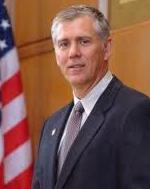 Breaking the LEED Monopoly Will Create Opportunity for Rural Oregon
Breaking the LEED Monopoly Will Create Opportunity for Rural Oregon
By Bruce Hanna
Co-Speaker Oregon House
From commercial buildings to manufacturing to packaging and distribution, sustainability has become an integral part of nearly every business practice. For Douglas and Lane Counties, whose timber and wood products sectors are vital to long-term community prosperity, the widespread adoption of green building codes to advance broad sustainability goals has drawn a lot of attention to the issue of third-party forest certification.
In recent years, more than 50 different forest certification programs have sprung up, each with their own set of criteria about what practices are most conducive to sustaining timberlands for economic growth, recreation, tourism, and a healthy environment.
One such program, the Forest Stewardship Council (FSC), is favored – at the exclusion of others – by the U.S. Green Building Council in its well-known LEED program, which certifies homes as well as government and commercial buildings with a sustainability rating. This exclusion of other credible certification programs displays LEED’s shortcomings and ignores the development of the green building movement and other responsible land management approaches.
In Oregon, nearly 45 percent of land is forested. Of Oregon’s 28 million acres of forested timberland, only about 565,000 acres are certified by the FSC. The FSC-only approach disregards the many other credible standards that advance sustainability goals – such as those offered by the Sustainable Forestry Initiative (over 3.2 million acres certified in Oregon) and the American Tree Farm System (nearly 993,000 acres certified in Oregon). These standards offer all of the protections needed to ensure sustainable forests for future generations in combination with the economic common sense that a healthy timber industry needs to prosper.
Sustainability isn’t just about the environment; communities need to be sustainable too. Without a robust and growing timber industry, we will continue to see depressed employment and wages, and a corresponding strain on funding for schools, roads, public safety, and critical programs for those who cannot care for themselves. These services are integral to our quality of life, and they are important for sustaining a healthy economy for generations to come. If LEED continues to deny wood products from other credible third-party certification programs, counties like Douglas and Lane will miss out on an important opportunity to access a rapidly-growing market and create jobs.
Other major timber producing states are taking action to break this LEED impasse. Gov. Nathan Deal of Georgia recently signed an executive order that directs new or expanded state building projects to adopt broader certification standards, including those offered by the Sustainable Forestry Initiative and American Tree Farm System. Gov. Paul LePage of Maine signed a similar executive order that called for the use of green building rating systems that give equal credit to all forest certification standards. Governors from 14 states, including former Governor Ted Kulongoski (D-OR), have sent letters to the U.S. Green Building Council voicing their concerns over LEED’s handling of wood and forest certification. I will ask Governor Kitzhaber to do the same.
Sustainable forests are a part of sustainable communities. Douglas County, in particular, has been devastated by the recession and the continuing struggles of wood products companies. But if LEED continues to recognize only one forest certification program to the exclusion of all others, our forest workers will continue to watch another opportunity pass them by.
State. Rep. Bruce Hanna is co-speaker of the Oregon State House of Representatives and representative for House District 7, which includes portions of Douglas and Lane counties.
Disclaimer: Articles featured on Oregon Report are the creation, responsibility and opinion of the authoring individual or organization which is featured at the top of every article.


